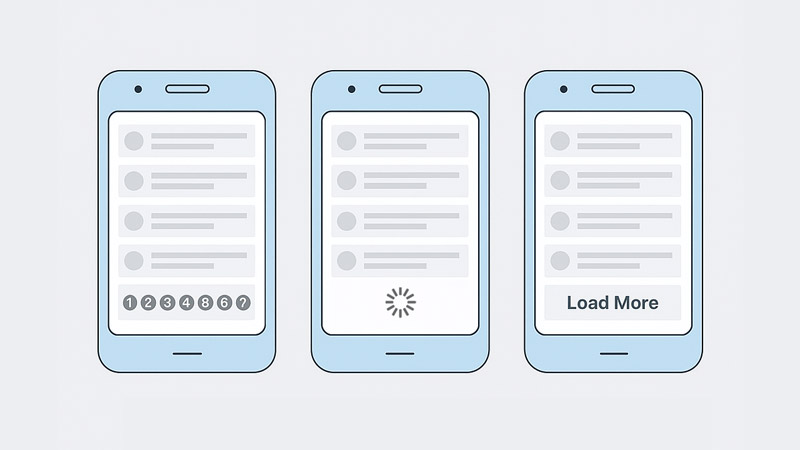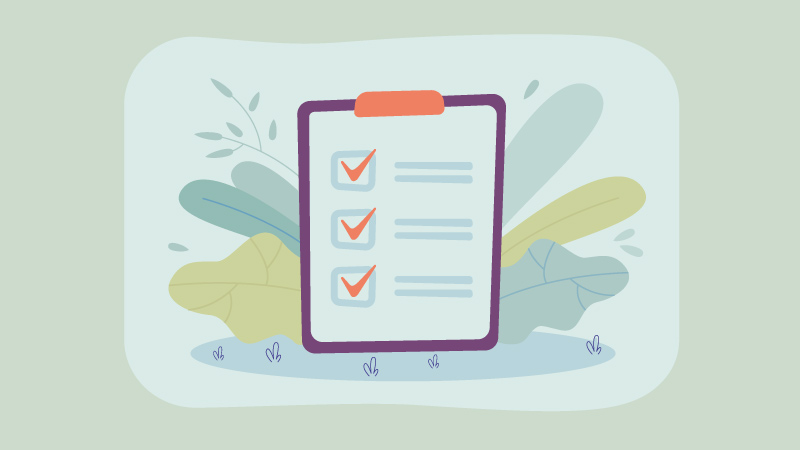Navigating long blog archives or category pages can impact both your user experience (UX) and search engine visibility (SEO). Should you stick with traditional pagination, add a “load more” button, or maybe lean toward infinite scroll?
Let’s unpack the SEO implications and recommend a setup that balances crawling, indexing, and UX.
What is Pagination and Why Does It Matter for SEO?
Pagination breaks content into numbered pages (e.g., /blog/page/2). Its SEO benefits include:
- Cleaner structure & internal linking, which helps search engines crawl your site effectively.
- Improved page speed, as content is split across smaller chunks.
- Better link equity distribution, since pages link to each other for stronger internal SEO.
Best Practices:
- Use self-referencing canonical tags on each paginated page, not a generic root page.
- Prefer descriptive and consistent URLs, like
/blog/page/2or?page=2, and avoid fragments (#page2). - Avoid noindexing paginated pages, as it can hurt content discovery and link flow.
- Don’t rely on deprecated
rel="next/prev"tags, Google no longer uses them.
The “Load More” Button: UX Wins, SEO Challenges
The “load more” approach (often JavaScript-based) offers better UX with smoother content loading, but search engines often can’t crawl content hidden behind JS.
- Googlebot doesn’t click buttons, meaning this content might never get indexed.
- Pagination gives bots reliable crawling, whereas “load more” risks leaving older content invisible.
How to make it SEO-friendly:
- Always include plain
<a href>links for paginated content, even if you use “load more” for users. - Use JavaScript to update the URL (via
pushState) as new content loads, making each portion linkable.
Infinite Scroll: A Caution for SEO
Infinite scroll automatically loads content as users scroll, great for engagement, but SEO-wise, problematic.
- Googlebot might not reach deep content if it’s only accessible via scrolling.
- Users may experience scrolling fatigue or content overload.
- Can lead to duplicate content issues if full posts load inline.
SEO-Optimized Approach: Pagination + Enhanced UX
The best compromise is to use HTML pagination for SEO, enhanced with UX features like “Load More” or infinite scroll but always backed by crawlable links and proper URLs.
Implementation Checklist:
- Include numbered pagination links visible in HTML (e.g., “Page 1 | 2 | 3…”).
- Use self-canonical tags on each paginated page.
- If using “load more,” ensure each click corresponds to a unique URL and updates browser history.
- Keep URL structures clean and avoid fragments.
- Only the first page should target the main SEO keywords, de-optimize deeper pages so they don’t compete.
Summary Table
| Strategy | SEO Pros | SEO Cons / Caution | Best Use Case |
|---|---|---|---|
| HTML Pagination | Crawlable, structured, fast | Adds click depth | Blog archives, category pages |
| “Load More” (JS) | Smooth UX, keeps users engaged | Hidden from bots if not linked | Hybrid: UX + SEO combination |
| Infinite Scroll | Seamless UX | Crawling, indexing issues | Not recommended alone |
Final Thoughts
For SEO-first blog archives, HTML pagination is the safest structure, it ensures search engines can crawl, index, and understand your content hierarchy. If you want the enhanced user experience of “load more” or infinite scroll, never replace pagination. Instead, layer UX enhancements on top of fully crawled, accessible HTML. That way, both users and search engines are served.




